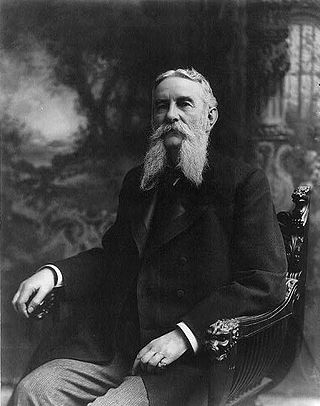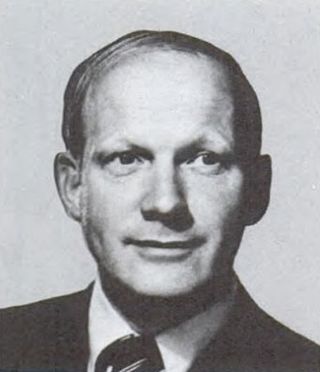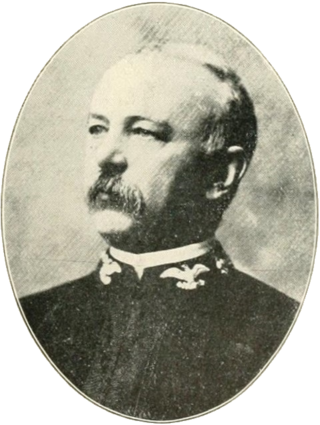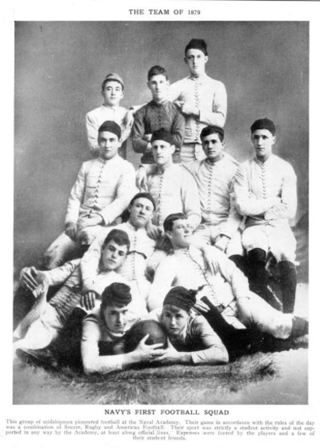
David Glasgow Farragut was a flag officer of the United States Navy during the American Civil War. He was the first rear admiral, vice admiral, and admiral in the United States Navy. He is remembered for his order at the Battle of Mobile Bay, usually paraphrased as "Damn the torpedoes, full speed ahead" in U.S. Navy tradition.
A midshipman is an officer of the lowest rank, in the Royal Navy, United States Navy, and many Commonwealth navies. Commonwealth countries which use the rank include Canada, Australia, Bangladesh, Namibia, New Zealand, South Africa, India, Pakistan, Singapore, Sri Lanka, and Kenya.

John Lorimer Worden was a U.S. Navy officer in the American Civil War, who took part in the Battle of Hampton Roads, the first-ever engagement between ironclad steamships at Hampton Roads, Virginia, on 9 March 1862.

Andrew Hull Foote was an American naval officer who was noted for his service in the American Civil War and also for his contributions to several naval reforms in the years prior to the war. When the war came, he was appointed to command of the Western Gunboat Flotilla, predecessor of the Mississippi River Squadron. In that position, he led the gunboats in the Battle of Fort Henry. For his services with the Western Gunboat Flotilla, Foote was among the first naval officers to be promoted to the then-new rank of rear admiral.

John Grimes Walker was an admiral in the United States Navy who served during the Civil War. After the war, he served as Chief of the Bureau of Navigation, head of the Lighthouse Board, and commander-in-chief of the Squadron of Evolution and of the North Atlantic Squadron. In retirement, he led commissions to investigate the construction of a Central American canal connecting the Atlantic and Pacific Oceans.
Edward Lea, was an officer in the United States Navy during the American Civil War. He was mortally wounded at the Battle of Galveston and died in the arms of his father, who was on the opposing side in the conflict.

Louis Malesherbes Goldsborough was a rear admiral in the United States Navy during the American Civil War. He held several sea commands during the Civil War, including that of the North Atlantic Blockading Squadron. He was also noted for contributions to nautical scientific research.

Charles Henry Davis was a self-educated American astronomer and rear admiral of the United States Navy. While working for the United States Coast Survey, he researched tides and currents, and located an uncharted shoal that had caused wrecks off of the coast of New York. During the American Civil War, he commanded the Western Gunboat Flotilla, where he won an important engagement in the First Battle of Memphis before capturing enemy supplies on a successful expedition up the Yazoo River. Davis was also one of the founders of the National Academy of Sciences in 1863 and he wrote several scientific books.

Edward Simpson served as an officer in the United States Navy during the Mexican–American War and the American Civil War, eventually attaining the rank of rear admiral. His service included being assigned as commanding officer of several Navy ships and serving with distinction in various shore assignments.

Samuel Perry "Powhatan" Carter was a United States naval officer who served in the Union Army as a brigadier general of volunteers during the American Civil War and became a rear admiral in the postbellum United States Navy. He received a nomination for appointment to the grade of brevet major general on January 13, 1866, two days before he was mustered out of the volunteers, to rank from the omnibus date of March 13, 1865. The nomination was confirmed by the United States Senate on March 12, 1866. He was the first and thus far only United States officer to have been commissioned both a general officer and a Naval flag officer.

David Dixon Porter was a United States Navy admiral and a member of one of the most distinguished families in the history of the U.S. Navy. Promoted as the second U.S. Navy officer ever to attain the rank of admiral, after his adoptive brother David G. Farragut, Porter helped improve the Navy as the Superintendent of the U.S. Naval Academy after significant service in the American Civil War.

Joseph Nicholson Barney was a career United States Navy officer (1835–1861) who served in the Confederate States Navy in the American Civil War (1861–1865).

Gary Alcide Lee was an American politician from New York. A Republican, he was noted for his service as a member of the New York State Assembly (1975–1978) and the United States House of Representatives (1979–1983).
William Frederick Halsey was a United States naval officer. He is the father of William Halsey Jr., one of only four American naval officers to obtain the five-star rank of Fleet Admiral.

Rear Admiral Henry Kuhn Hoff was a United States Navy officer. During his long career, he took part in combat in Sumatra and in the American Civil War.

Rear Admiral Philip Henry Cooper was an officer in the United States Navy. He fought in the American Civil War and served as Superintendent of the United States Naval Academy and as commander-in-chief of the United States Asiatic Fleet.
John Johnson Jr. was the last Chancellor of Maryland, serving in that office from to 1846 to 1851.

Charles Cabaniss was a midshipman in the United States Navy and early player of American football. Born and raised in Central Virginia, he was appointed to the United States Naval Academy at the age of 16. At the academy, Cabaniss retained average-level grades and was a member of the school's first-ever football team. He graduated in 1880 and was appointed to the USS Swatara. Cabaniss was killed in an accident on the Swatara in 1882 which received coverage throughout much of the Eastern United States.

Henry Davis Todd Jr. was a career officer in the United States Army. A veteran of the Spanish–American War and World War I he attained the rank of major general and was most prominent for his command of several Field Artillery and Coast Artillery units during and after the First World War.
John Johnson Allen was an American lawyer and politician from New York.















